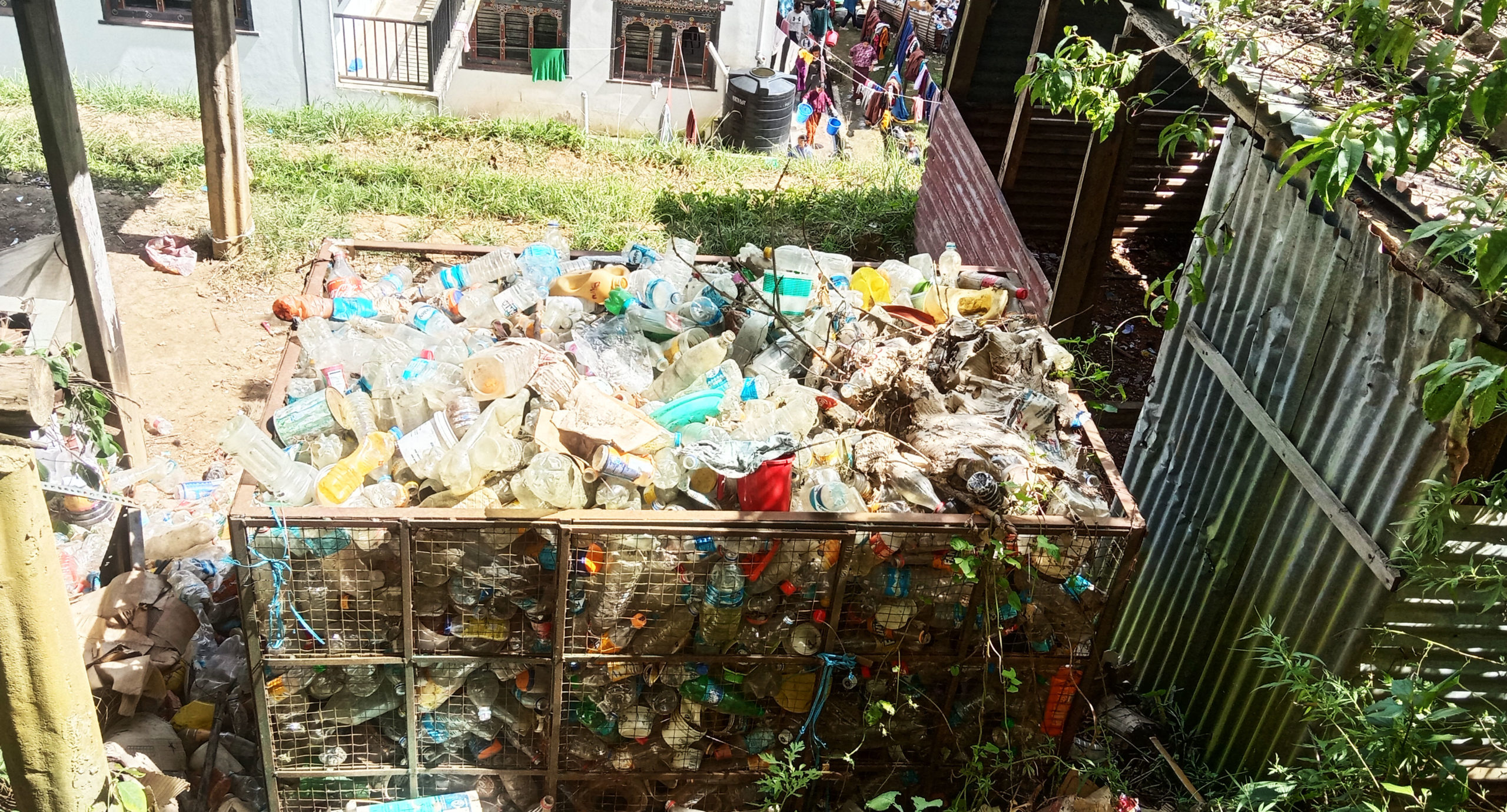Choki Wangmo | Tsirang
Without timely waste collection and more people settling in Tsirangtoed, residents of the locality say that waste management has become challenging.
Most of the residents store their waste, mostly plastic waste and glass bottles, in sacks, which are put away in storehouses. “We don’t have any other alternative,” a resident said.
Another said that despite proper care and storage, strong winds and the menace created by stray dogs add to the problem.
A restaurateur said that with waste collection scheduled once in over a month, waste piles up and the place becomes unhygienic. “If waste collection trucks could collect at least once a month, it would be easier.”

Most of the waste is plastic bags and PET bottles
At the site, Kuensel found that the waste is strewn across the place. The waste management problem was a particular issue in the vicinity of Tsirangtoed Central School. Although the school management has segregated waste in stacks, both dry and wet waste has been dumped outside the fence in the bushes.
A resident who lives near the school said that the issue needs to be looked after by the authorities concerned, since it could become difficult to manage in the future and lead to major problems.
The school principal, Yeshi, said that a school waste management committee looks after the waste generated at the school and ensures timely collection. “Scavenging dogs, however, make management difficult.”
Senior environment officer with the dzongkhag, Dorji Wangdi, said that waste management became an issue in the gewog recently, since residents had been provided mini waste bins by the sector offices without consultation with the dzongkhag. “When these small bins filled up, people just dumped the waste wherever they could.”
He said that a refuse van was allocated to collect waste from gewogs every month. “With waste collection points in every gewog, the van is supposed to collect the waste once or twice a month from each gewog.”
He said that with an increasing number of institutions like schools and satellite towns, waste generation has increased in recent days. Waste collection points, he said, are getting filled up quickly.
Since the quality of refuse trucks is not up to standards, they are restricted to places with better road connectivity, Dorji Wangdi said, adding that collection points are mostly located within the gewog centres (GC). The GCs are also mandated to provide helpers to load the waste.
He said that the dzongkhag has plans to construct a permanent material recovery centre and obtain an additional compactor truck in the next financial year.
Currently, there are three waste compactor trucks with the dzongkhag.
Since most of the collection centres have become obsolete, he said that there are plans to shift these centres to locations with higher population density in the future.
According to the country’s first national waste inventory survey in 2019, in rural areas, more than 55 percent of the households still resort to disposing of their household waste in pits, or burn them in the open, due to a lack of collection service.
“About 85 percent of rural households do not have access to waste collection services,” it states.
Edited by Tshering Palden


